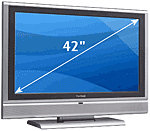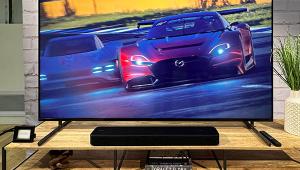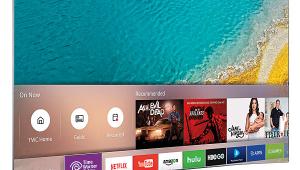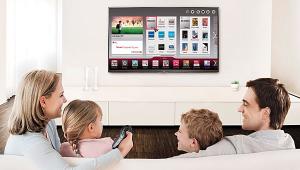Picking the Right Screen Size
The original rules of thumb on screen size were concocted during the era of CRTs and scan lines and have been massaged somewhat since, and will be massaged further in this era of 1080p.

The older rules for how far back one should sit from a given size screen were essentially written to mask the presence of those unsightly scan lines and the poor quality of our lower resolution sources. Now high-def is here, and superior video processing makes even our legacy video look better than ever.
While all this has changed a lot, one thing hasn't. Most of you will buy as big a TV as you can physically fit in the vicinity of where it's going to live, and damn the rest. And more power to you! Most of the time this will work out fine, just check here and make sure you're in the ballpark with our recommended viewing range for your screen size so you're not overpowering your room or your eyeballs.
Today, with HD becoming a more regular viewing meal, DVD being far superior to most of our legacy video, and the improvements in video processing, the new rule of thumb is:
 One and a half to two times screen diagonal measurement is our recommendation for optimum seating distance from the screen.
One and a half to two times screen diagonal measurement is our recommendation for optimum seating distance from the screen.
Keep in mind that some of the cheapie sets sacrifice the processing quality that makes the legacy sources shine. Always check at the store before you buy—look at a screen in your size range and walk off the right distance in the store and make sure it looks good with at least a decent DVD or two.
Below is a chart with a number of common screen sizes measured in diagonal, followed by the recommended range of viewing distance.
40" diagonal screen: 59"- 78"
42" diagonal screen: 62"- 82"
46" diagonal screen: 68"- 90"
50" diagonal screen: 74"- 98"
55" diagonal screen: 81"- 108"
60" diagonal screen: 88"- 118"
65" diagonal screen: 96"- 127"
70" diagonal screen: 103"- 137"
LCD or Plasma For the Big Picture?
Until fairly recently, LCDs were confined to screen sizes below 40" and plasma's performance dropped off a cliff above 50." The first generations of LCDs above 40" and plasmas bigger than 50" were hideously expensive underperformers. All of this has changed or is changing.
Although more expensive than most 50" plasmas, LCDs are now more reasonably priced up to around 52" and perform far better than their smaller counterparts used to. And we're seeing signs that plasmas above 50" in size can perform better than the smaller plasmas of the past.
However, going above 50" with either flat panel technology is still expensive generally, and offers performance that's inferior to smaller flat panels. Those big, blue light special flat panels aren't such a bargain if performance matters at all.
Consider too that if you really want to go bigger than 50" in screen size that today's best microdisplay RPTVs offer better performance for less money. And today's RPTVs are much smaller and lighter than the RPTVs of yesteryear. If you really want a big screen, look to the RPTV or be prepared to pay more for less performance to get the slim form factor.















































